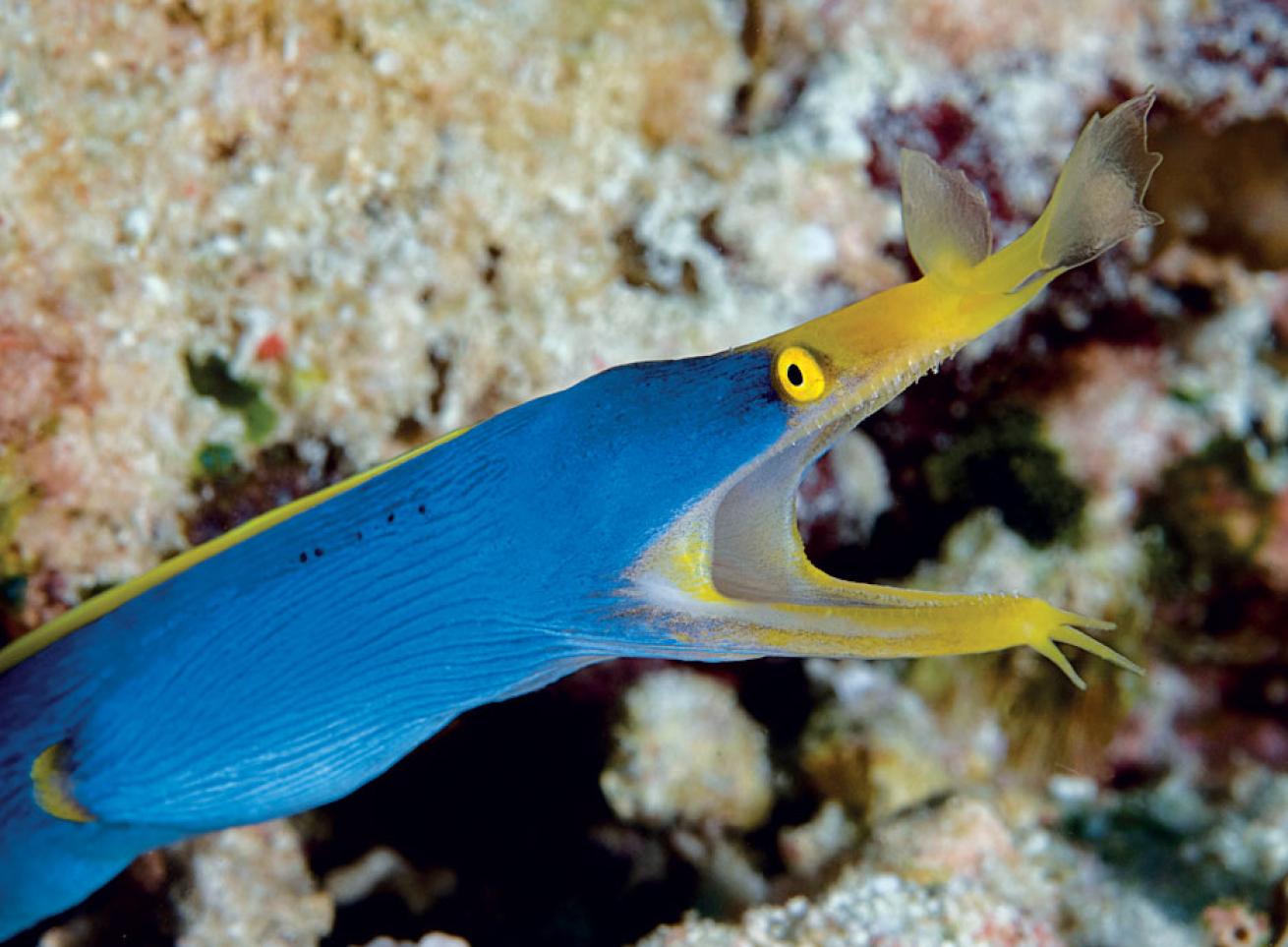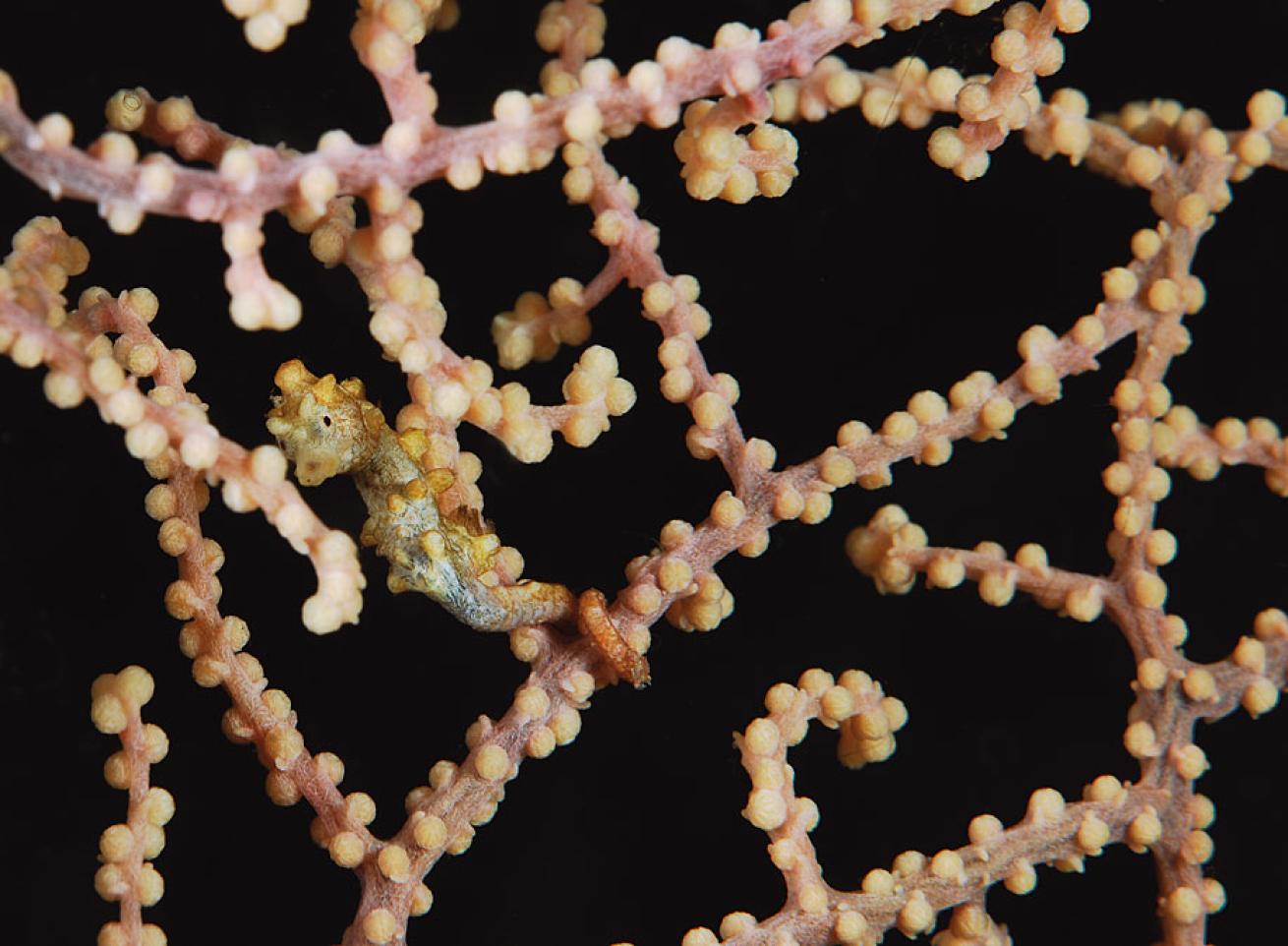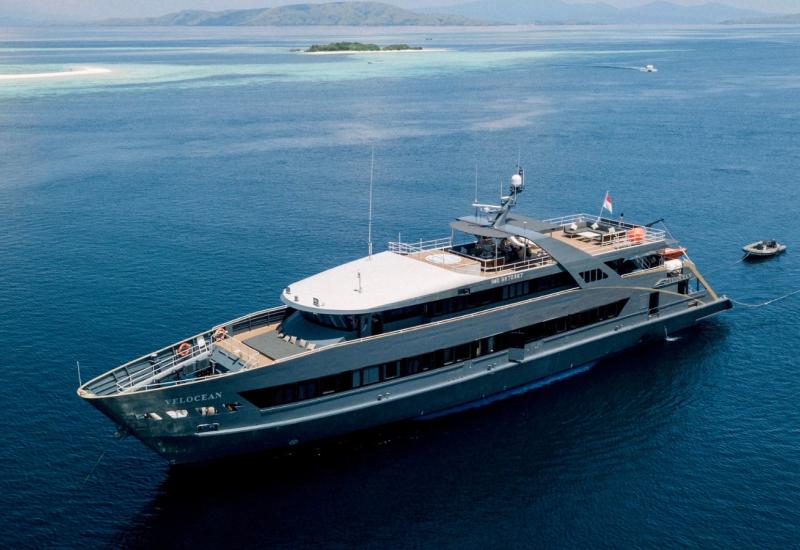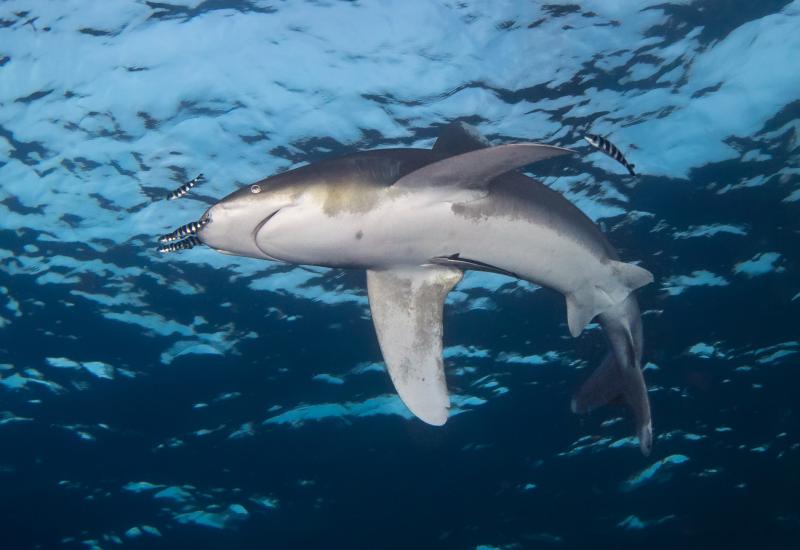The Four Kings

By Geri Murphy As the growth of dive tourism spreads throughout the globe, it becomes more difficult to find a destination that is truly “untouched” by divers and in pristine condition. Raja Ampat is such a place, and has been since it was first opened to divers more than a decade ago.
Itinerary
Day 1 Fly into Sorong, West Papua. Transfer to Paradise Dancer.
Days 2 & 3 Four dives north of Batanta Island, including (1) Kri and Friwin Channel, to see everything from mimic octopi, nudibranchs, ornate ghost pipefish, frogfish, ribbon eels and wobbegong sharks.
Day 4 Arborek, (2) Gam and (3) Yanggelo, for dives with mantas, waspfish, sea moths, crocodilefish and blue-ring octopus. Visit the Cendana Pearl Farm and dive the pearl farm piers.
Day 5 (4) Aljui Bay, (5) Kawe, South Raibe. Highlights include pygmy seahorses, frogfish, batfish, pygmy cuttlefish, assorted nudibranchs and mantis shrimp.
Day 6 (6) Dive Fam, including Melissa’s Garden and Barracuda Point. Day 7 At (7) Wagmab and Farondi, you’ll dive with red Denise pygmy seahorses, crabs, disco clams and nudibranchs.
Day 8 At (8) Wayiblatan and Wayil, with batfish, Satomi’s seahorses, black frogfish and giant groupers.
Days 9 & 10 Schooling fish, mantas, barracuda, whitetip sharks and amazing sea fans and soft corals at one of the region’s most famous sites, (9) Fiabacet.
Day 11 Final dives around Batanta to see shrimp, pipefish, crabs and juvenile barramundi.
Day 12 Depart Paradise Diver.
Though it is part of Indonesia, Raja Ampat lies off the northwest tip of the Bird’s Head Peninsula on the island of New Guinea. Known as the Four Kings in Bahasa Indonesian, Raja Ampat consists of four main islands (the “four kings”) with more than 1,500 smaller islands, cays and shoals east of the famous reefs off Sulawesi and Komodo. Raja Ampat is often described as home to the most biologically diverse coral reefs in the world. Hundreds of coral species have been documented, and dozens more are new to science. Unfortunately for divers, there’s too much to discover in a week or 10 days; on the other hand, there are a number of great live-aboards to choose from to get started. One of the newest, and certainly one of the most luxurious, live-aboards is Dancer Fleets’ Paradise Dancer, aka Dewi Nusantara (or “Goddess of the Archipelago”). Launched in the spring of 2009, this newly constructed three-masted motor schooner stretches 188 feet long and 39 feet wide, with staterooms at 180 square feet each — more than twice the size of most live-aboards. This is a luxury diving yacht in the truest sense. While the reefs of Raja Ampat are colorful and bountiful, they can also be challenging to dive. And yet, if you’re on a live-aboard you might not ever notice. Because of changing weather and dive conditions, the itinerary for the Paradise Dancer is flexible, meaning every charter will be slightly different from the last. The weather and marine conditions dictate where the boat can find protected areas to anchor and currents and waves that may impact crossings between islands. The currents, which provide plankton-rich nutrients for the fish and coral, can run from moderate to strong with visibility ranging from clear to murky. But one thing is for sure: Wherever you dive among these islands, you can expect an overwhelming cornucopia of sea life. There are 1,300 documented species of reef fish in Raja Ampat — the latest count is 1,352 — and more than 500 species of coral. Of the reef fish, at least 25 species are indigenous to Raja Ampat, and the list keeps growing. It’s not unusual to come across a fish or coral species not yet described or even found in an identification book. The reefs and drop-offs are in pristine condition, with giant schools of platter-size batfish, jacks, tuna, barracuda, surgeons, fusiliers and bumphead parrotfish. You’ll see manta rays and sharks too, and the swirling masses of color and form will delight even the most jaded divers. The reports of Raja Ampat being good only for the big things have been greatly exaggerated too: There are frogfish, wrasse, angelfish, cuttlefish and jawfish. The week I was on board the Paradise Dancer, Ned DeLoach and Paul Humann (co-authors of popular fish identification books) photographed many invertebrates, most notably a dozen new species of crinoid shrimp, a new species of wrasse and two or three newly discovered shrimp. We also saw a blue-ringed octopus, ghost pipefish, several species of pygmy seahorses, lionfish, pipefish, signal gobies, hairy squat lobsters, and the list goes on. The final fish count for our trip was 472 species. The Raja Ampat islands are one of diving’s final frontiers. You’ll test your marine life identification and underwater photography skills to the limit. Even more thrilling: You’ll test your sense of adventure.

Need to Know
Getting There -- First fly into Manado (MDC), Bali (DPS) or Jakarta (JKT) from the United States’ West Coast. From Manado it’s a two-hour flight on Lion Air to Sorong (SOQ), where you will be picked up at the airport and delivered to the Paradise Dancer.
When to Go -- Diving in Raja Ampat is good year-round, but best January through March and October through December.
Dive Conditions -- Water temperatures vary from 82 to 85 degrees F. Because currents range from moderate to strong, this is recommended for experienced divers.
Price Tag -- Depending on the stateroom chosen, the prices range from $4,200 to $4,750, and the trip includes 11 nights and 9½ days of three to four dives a day, all meals and snacks, beverages (including beer and some wine) and transfers between airport and boat. There is a $175 port/park fee and a $200 fuel surcharge.
More Info -- Dancer Fleet, www.dancerfleet.com.










